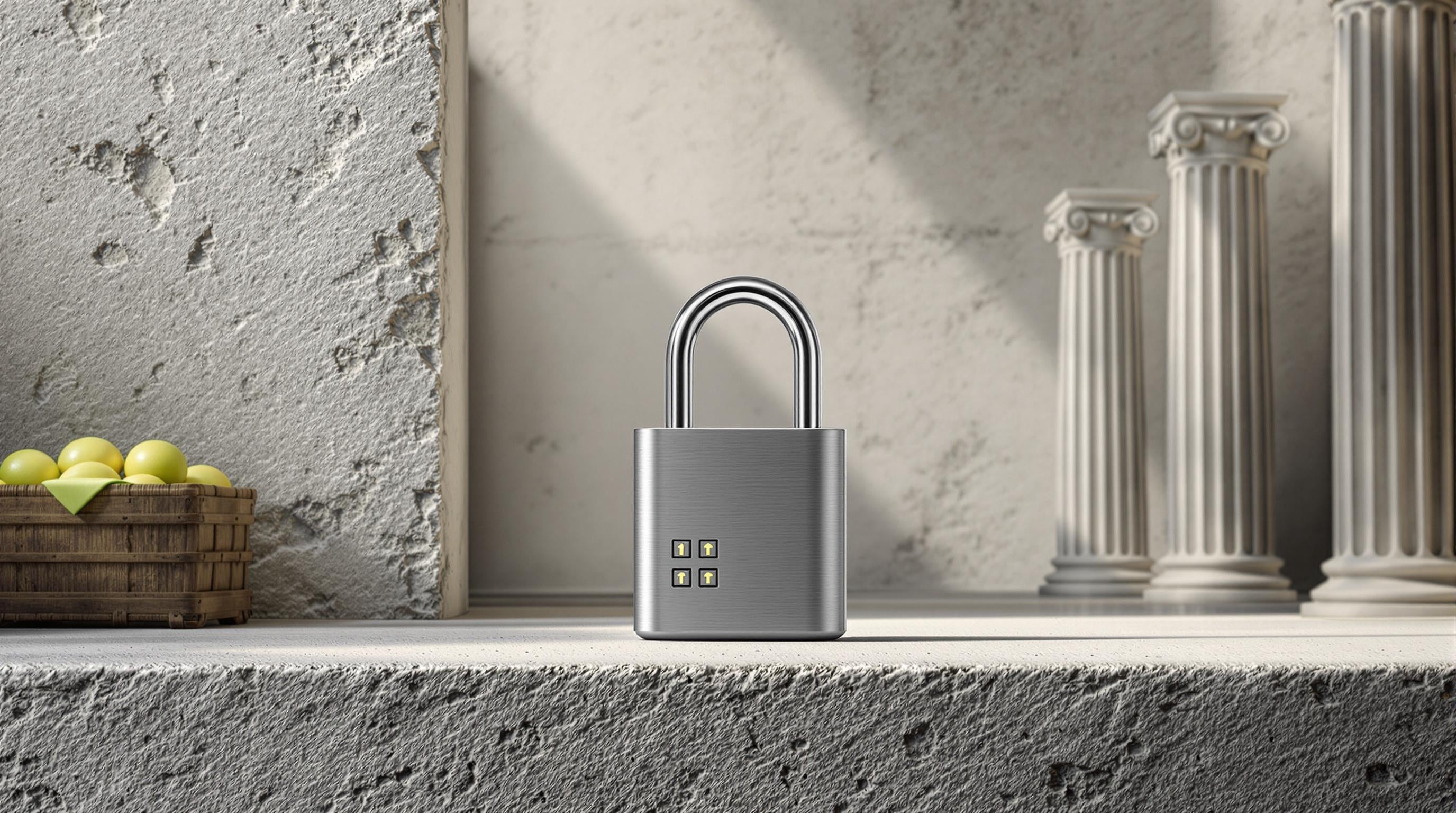TSA-approved locks are essential for secure travel while complying with airport security rules. Here's what you need to know:
-
Why Use TSA Locks?
They allow TSA agents to inspect your luggage without damaging the lock, reducing delays and ensuring compliance with airport security. -
Benefits Over Standard Locks:
TSA locks remain functional after inspections, are easily identifiable with the Travel Sentry logo, and help avoid security hassles. -
Key Features to Consider:
Look for durable materials, compact design, weather resistance, and TSA certification marks. -
Types of TSA Locks:
- Combination Locks: No keys needed, but you must remember the code.
- Key Locks: Easy to use but require keeping track of the key.
-
Built-in Lock Systems:
Backpacks like the Titantrek Atlas Vault include integrated TSA locks, hidden anti-theft pockets, and waterproof materials for added security.
Quick Comparison
| Feature | TSA-Approved Locks | Standard Locks |
|---|---|---|
| Security Access | Opened with TSA master keys | Must be cut or broken |
| Post-Inspection | Remain functional | Often damaged |
| Compliance | Meets airport rules | May cause delays |
| Recognition | Travel Sentry logo | No official recognition |
For extra protection, consider backpacks with anti-theft features like cut-resistant materials, hidden pockets, and RFID-blocking compartments. Always test your lock before travel and keep a backup handy.
Triple Lockdown Luggage Zipper Lock - TSA Lock Approved TSA80

Backpack Security Problems
Did you know that 30% of travelers experience theft or loss of belongings, especially in airports and busy tourist areas? This highlights the importance of having secure, TSA-compliant measures for your travel gear.
Theft Prevention
Travelers face several common theft risks, including:
- Theft at airports
- Snatching at transit stations
- Pickpocketing in crowded tourist hotspots
The Titantrek Atlas Vault backpack is designed to tackle these challenges. It features TSA-approved locks, hidden anti-theft pockets, and waterproof materials, offering multiple layers of protection. But what about airport security rules? Let’s break it down.
Airport Security Rules
Using non-TSA locks can create problems during security checks. If TSA agents can't open your lock, they may have to cut or damage it, causing delays and unnecessary hassle. To avoid this, look for locks with the Travel Sentry logo. These TSA-approved locks allow agents to inspect your bag without damaging it, making the process smoother and safer.
While TSA-approved locks aren’t 100% theft-proof, they provide an essential first layer of protection by striking a balance between accessibility and security.
How to Pick a TSA Lock
Start by selecting a TSA-approved lock that offers a good mix of security and ease of use. Then, explore the available lock types to find one that suits your travel needs.
Lock Types and Options
TSA-approved locks generally fall into two categories: combination locks and key locks. Each has its own pros and cons.
| Lock Type | Pros | Cons |
|---|---|---|
| Combination | • No key to lose • Customizable codes • Lightweight design |
• Must remember the code • Harder to set up in low light |
| Key | • Easy to use • Quick access • No codes to remember |
• Keys can be lost • May need a spare key • Sharing access is less convenient |
For example, the Titantrek Atlas Vault backpack includes a built-in TSA-approved combination lock, offering hassle-free security without needing extra locks.
Key Lock Features
Once you've chosen the type of lock, evaluate the following features to ensure strong security:
- Material Quality: Opt for locks made from durable materials like zinc alloy or hardened steel. Avoid locks with too much plastic.
- Size and Weight: Look for compact locks that are sturdy but won’t snag on your luggage.
- Certification Marks: Check for Travel Sentry and TSA compliance symbols to ensure the lock meets standards.
- Weather Resistance: Choose locks with coatings that prevent rust and corrosion, especially for outdoor travel.
- Cable Durability: If using a cable-style lock, ensure the cable is strong and threads easily through zippers.
For maximum security, some locks combine both key and combination mechanisms, offering added flexibility and protection.
sbb-itb-b1567d8
Using TSA Locks Correctly
Lock Setup Steps
Setting up your TSA lock the right way ensures it works as intended. Here’s how to secure your backpack:
- Check Zipper Compatibility: Make sure your backpack's zipper pulls have holes that align for threading the lock.
- Thread the Lock: Insert the lock's shackle (or the cable, if it's a cable-style lock) through the zipper pulls.
- Test the Mechanism: Open and close the lock a few times to confirm it operates smoothly.
-
Set Your Combination: For combination locks, follow these steps:
- Start with the default code (usually 0-0-0).
- Press and hold the reset button.
- Enter your new code.
- Release the reset button.
- Test the new combination to ensure it works.
It’s a good idea to store your combination or spare key in a secure place, like a password manager or a digital note.
Lock Damage Solutions
Even with proper use, locks can encounter problems during travel. Here are some common issues and how to handle them:
| Problem | Quick Fix | Prevention Tip |
|---|---|---|
| Jammed Lock | Use a small amount of lock lubricant and gently work the mechanism. | Apply lubricant every three months. |
| TSA Damage | Document the issue and report it at the airport. | - |
| Forgotten Code | Contact the manufacturer with proof of purchase. | Register the lock with the manufacturer when buying. |
If TSA damages your lock, report it immediately to an airport supervisor. Follow their instructions and also reach out to the lock manufacturer for repair or warranty options. To avoid being stranded, always carry a backup TSA-approved lock in your carry-on.
For regular upkeep, apply a little lubricant to the lock every three months, especially if you travel often. Built-in TSA locks, like those on the Titantrek Atlas Vault backpack, are easier to set up but still need periodic testing to ensure they’re working properly.
Staying on top of testing and maintenance will keep your TSA-approved lock reliable for all your trips.
Advanced Security Options
Modern backpacks now come with a range of security features designed to keep your belongings safe while traveling. These go beyond basic TSA locks, offering enhanced protection and convenience.
Built-in Lock Systems
Backpacks with integrated TSA locks offer a better solution compared to traditional standalone locks. Here’s why they stand out:
| Feature | Benefit | Practical Impact |
|---|---|---|
| Factory Installation | Ensures proper fit and alignment | No compatibility concerns |
| Permanent Integration | Always attached, can't be misplaced | Reduces travel stress |
| Streamlined Design | No extra bulk or dangling parts | Looks sleeker and cleaner |
| TSA Compatibility | Approved for security checks | Speeds up airport procedures |
For example, the Titantrek Atlas Vault features a TSA-approved built-in lock with a sleek design, earning a 4.88/5 rating from 24 verified reviews [1].
"Our built-in TSA-approved lock is designed to provide peace of mind for travelers, ensuring that your belongings are secure while still being accessible to TSA agents." - Titantrek [1]
But locks aren’t the only line of defense. Many backpacks now include additional anti-theft features.
Extra Security Features
To address common theft risks, modern backpacks integrate multiple protective elements:
Anti-Theft Design Highlights:
- Cut-resistant materials: Stop slash-and-grab attempts.
- RFID-blocking compartments: Safeguard sensitive electronic data.
- Hidden pockets: Keep valuables out of sight.
- Anti-theft zippers: Make it harder for thieves to access your bag.
Take the Atlas Vault as an example - it pairs anti-theft compartments with its TSA lock, creating a well-rounded security system.
Prices for these advanced backpacks typically range from $50 to $200, with premium models like Titantrek's priced between $137.11 and $238.11. For frequent travelers, the added protection and convenience make the cost worthwhile.
When selecting a backpack, look for these key features:
- Built-in TSA-approved locks
- Waterproof materials
- Anti-theft compartments
- Cut-resistant construction
- RFID-blocking technology
These elements combine to provide a secure and user-friendly travel experience. Before you head out, double-check all security features to ensure they’re functioning properly.
Final Tips
After selecting a TSA-approved lock, it's important to use it properly and keep it in good condition to maximize its effectiveness.
Quick Reference Guide
| Security Aspect | Key Action | Why It Matters |
|---|---|---|
| Lock Selection | Pick a TSA-approved lock | Meets travel regulations and standards |
| Combination Setup | Create a unique 3-4 digit code | Makes it harder for others to guess |
| Maintenance | Inspect the lock mechanism regularly | Ensures it stays functional |
| Documentation | Save your combination securely | Avoids accidental lockouts |
To keep your lock dependable, follow these extra precautions:
- Test the lock before every trip to confirm it's working.
- Look for any signs of wear or damage.
- Double-check that any built-in locking features are functioning.
- Store backup keys in a safe but separate location.
For added security, consider backpacks with built-in TSA-approved locks, anti-theft features, and waterproof designs.

How Vacuum Compression Enhances Waterproof Storage
Ultimate Guide to Quick-Access Travel Compartments